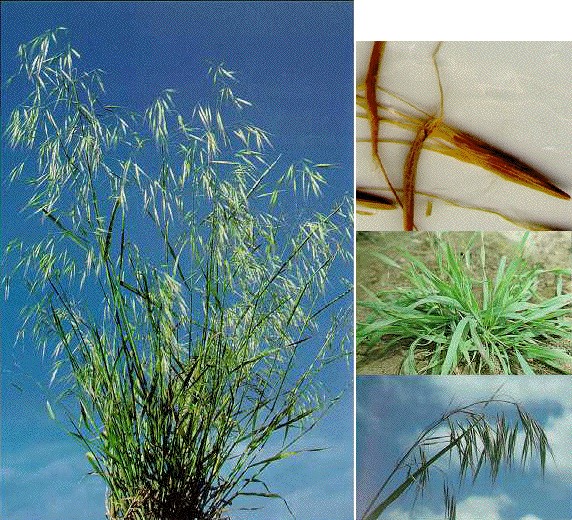
By Nevin Lawrence, UNL Integrated Weed Management Specialist
The days are getting shorter, the weather is getting colder, and cheatgrass is starting to emerge from the soil. As fall begins, another generation of cheatgrass begins to take over roadsides, rangeland, and farmland across Nebraska.
Cheatgrass, a native of parts of Africa, Asia, and Europe, began arriving in the New World as early as the 18th century. Initially cheatgrass was only present in small numbers, but it has since become one of the most widely distributed plants (invasive or native) in all of North America. The history of cheatgrass is tied closely to the history of western expansion. As the Great Plains and western United States were grazed by livestock, plowed under for cultivation, or used for railroad and highway construction, cheatgrass took advantage of these disturbances.
WHY IS IT A PROBLEM?
Cheatgrass is a winter annual species. It emerges as fall begins, goes dormant in the winter, and becomes active again when spring arrives. Cheatgrass grows rapidly in the spring, and generally produces seed and senesces, or dies, by May or June. By completing its life cycle so early in the growing season, cheatgrass can be very competitive against crops, desirable forage, and native plants. This competition leads to reduced crop yields, poor quality hay, and reduced productivity in rangeland.
IDENTIFICATION
Downy brome, another name for cheatgrass, can be identified (as its name implies) by the many “downy” soft and dense hairs covering all parts of the plant. As cheatgrass matures, the plant changes from a green to a red hue before producing many seed heads in the late spring or early summer (Figure 1 http://go.unl.edu/dz4g). Seed heads also change from light green to deep red, and finally light brown, as the plant matures (Figure 2 http://go.unl.edu/fd8z). Cheatgrass often hitches a ride in the socks or other clothing of outdoorsman, farmers, and ranchers.
WHAT CAN WE DO ABOUT IT?
Cheatgrass isn’t going away, but farmers, ranchers, and land owners can do their part to reduce the impact of this weed. Identify how new cheatgrass seed may be entering the land you manage. Rangeland is often infested through contaminated hay, especially hay taken from early cuttings. Promoting healthy competition from beneficial species, and minimizing disturbance and overgrazing, are key to limiting the spread of cheatgrass.
Targeted grazing, mowing, and herbicides can all be effective in controlling cheatgrass, but only if implemented at the proper time. Grazing and mowing need to occur before seed heads emerge. Herbicides are most effective when applied in late September through December. Herbicides can be applied in the spring, but efficacy decreases dramatically in the spring.
Consult EC130 Guide for Weed, Disease, and Insect Management in Nebraska (http://go.unl.edu/uabp) for herbicide options to control cheatgrass in small grains, hay, and rangeland.
Nevin Lawrence
Integrated Weed Management Specialist
Panhandle-REC, Scottsbluff
nlawrence2@unl.edu
To listen to BeefWatch podcasts go to: https://itunes.apple.com/us/podcast/unl-beefwatch/id964198047 or paste http://feeds.feedburner.com/unlbeefwatch into your podcast app.